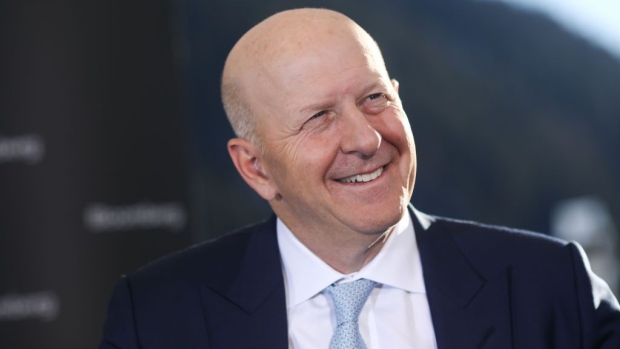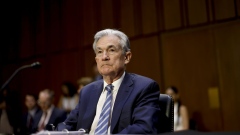Jul 15, 2020
Goldman Sachs traders shine, but don't expect a repeat
, Bloomberg News

Goldman Sachs Group Inc.’s bond traders came through in the clutch.
The bank that’s synonymous with Wall Street has made no secret about its efforts in recent years to diversify its business to create more durable revenue and reduce sensitivity to financial market conditions. But the second quarter was no time to shy away from its roots, as earnings from JPMorgan Chase & Co. and Citigroup Inc. proved on Tuesday by delivering profits even after setting aside huge sums for loan losses.
JPMorgan’s trading revenue in fixed-income, currencies and commodities rose in the second quarter by a whopping 120 per cent,(1)while Citigroup’s jumped by 89 per cent. In equities, JPMorgan posted a 38 per cent increase while Citigroup had a modest drop.
Needless to say, 120 per cent is a high hurdle. But Goldman cleared it and then some, reporting on Wednesday that FICC trading revenue soared 149 per cent relative to a year ago to US$4.24 billion, the highest in nine years and far and away outpacing estimates for US$2.64 billion. Even in equities, trading rose 46 per cent, the division’s best performance in 11 years.
Together, traders accounted for more than half of the bank’s revenue in the second quarter. That kind of profiting from market volatility, combined with a doubling in revenue from underwriting stocks and bonds, pushed net income higher than it was a year earlier — quite the surprise, given the global pandemic and economic recession.
Then again, the swift and sharp turnaround in financial markets in April and May was also shocking, so perhaps it’s only natural that Goldman was in the best position to take advantage of Wall Street’s animal spirits while staying largely insulated from Main Street’s anxiety.
Heading into this earnings season, its shares were only down about 10 per cent in 2020, compared with declines of more than 30 per cent for Bank of America Corp., Citigroup and JPMorgan (Morgan Stanley was down just 2.6 per cent).
On Tuesday, after the blockbuster quarters for bond traders at Citigroup and JPMorgan, it was Goldman shares that rallied 2.5 per cent, more than any company in the S&P 500 bank index and the second most behind Berkshire Hathaway Inc. in the diversified financials sub-index. Shares extended their advance in pre-market trading.
In one of the more colorful comments on second-quarter earnings so far, Octavio Marenzi, chief executive officer of Opimas, called Goldman’s results “almost indecent” and may lead to an outcry for the government to take steps that don’t directly boost investment-banking profits.
Now, just because Goldman’s traders are clearly still talented at their jobs, and Wall Street trading businesses aren’t irreparably broken as some feared, doesn’t mean the bank should count on the second quarter becoming the norm.
The S&P 500 Index staged one of its biggest rallies ever from its March lows but has since traded sideways for more than a month. Corporate-bond prices have trickled higher while the torrent of new deals has slowed considerably.
The Federal Reserve used its shock-and-awe power to get markets to where they are today. There’s a good chance it’ll be a slog in the months ahead.
JPMorgan CEO Jamie Dimon effectively said as much on Tuesday toward the end of a call with analysts. “For trading, because no one asked, cut it in half,” he said of projecting coming revenue based on its second-quarter results. “Cut it in half, and that’ll probably be closer to the future than if you say it’s still going to still be double what it normally runs.”
Goldman CEO David Solomon also seemed to acknowledge that this huge windfall can’t last, though in a less direct way. “The turbulence we have seen in recent months only reinforces our commitment to the strategy we outlined earlier this year to investors,” he said in a statement.
That likely refers to initiatives like its new U.S. transaction banking business, which takes deposits and provides escrow services, among other things, as well as its Marcus consumer bank and its joint effort with Apple Inc. on the Apple Card credit card.
Meanwhile, Goldman’s provision for credit losses is US$1.59 billion, a fraction of what its more consumer-facing competitors have had to set aside. While that figure is seven times what it was a year ago, due in part to higher write-downs in private credit and real estate, JPMorgan’s was nine times greater and Wells Fargo & Co.’s was almost 20 times.
Of course, Goldman has its own unique troubles: Provisions for litigation and regulatory proceedings were US$945 million in the quarter, up from US$66 million a year ago, as it nears a settlement with regulators over its 1MDB scandal.
To paraphrase the late football coach Dennis Green, Goldman and its legion of traders are who we thought they were. The bank proved it still dominates Wall Street during one of the most tumultuous periods for financial markets in recent memory. Frankly, if it didn’t blow away all expectations, that would have been something of a red flag.
Solomon shouldn’t let one set of eye-popping numbers distract from the longer-term approach of getting a foothold in new lines of business. He’ll sing praises for his traders today — and rightfully so — but probably knows deep down that he can’t count on a repeat performance.
(1) This excludes the gain from the Tradeweb initial public offering in 2019's second quarter.
This column does not necessarily reflect the opinion of the editorial board or Bloomberg LP and its owners.
Brian Chappatta is a Bloomberg Opinion columnist covering debt markets. He previously covered bonds for Bloomberg News. He is also a CFA charterholder.



